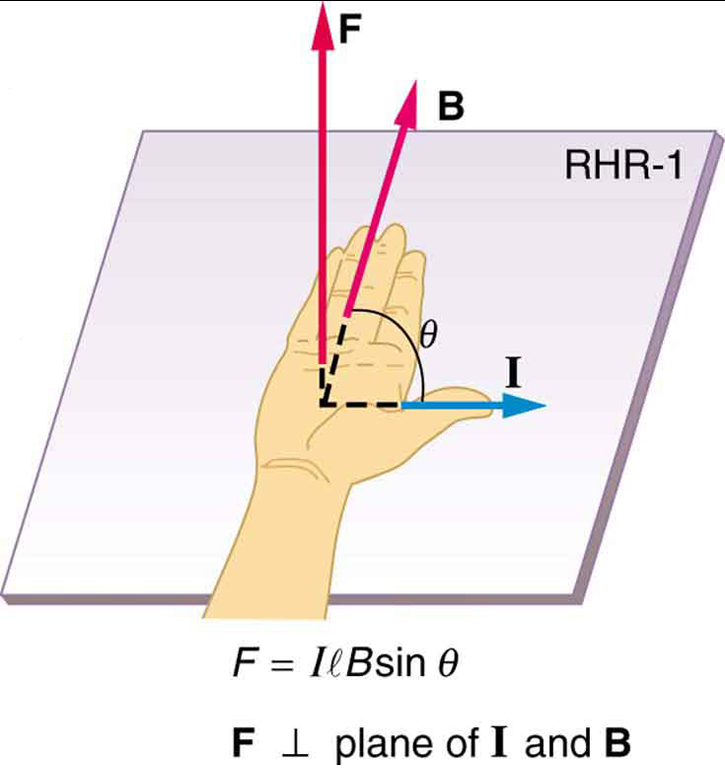| << Chapter < Page | Chapter >> Page > |
By the end of this section, you will be able to:
The information presented in this section supports the following AP® learning objectives and science practices:
Because charges ordinarily cannot escape a conductor, the magnetic force on charges moving in a conductor is transmitted to the conductor itself.

We can derive an expression for the magnetic force on a current by taking a sum of the magnetic forces on individual charges. (The forces add because they are in the same direction.) The force on an individual charge moving at the drift velocity is given by . Taking to be uniform over a length of wire and zero elsewhere, the total magnetic force on the wire is then , where is the number of charge carriers in the section of wire of length . Now, , where is the number of charge carriers per unit volume and is the volume of wire in the field. Noting that , where is the cross-sectional area of the wire, then the force on the wire is . Gathering terms,
Because (see Current ),
is the equation for magnetic force on a length of wire carrying a current in a uniform magnetic field , as shown in [link] . If we divide both sides of this expression by , we find that the magnetic force per unit length of wire in a uniform field is . The direction of this force is given by RHR-1, with the thumb in the direction of the current . Then, with the fingers in the direction of , a perpendicular to the palm points in the direction of , as in [link] .

Calculate the force on the wire shown in [link] , given , , and .
Strategy
The force can be found with the given information by using and noting that the angle between and is , so that .
Solution
Entering the given values into yields
The units for tesla are ; thus,
Discussion
This large magnetic field creates a significant force on a small length of wire.
Magnetic force on current-carrying conductors is used to convert electric energy to work. (Motors are a prime example—they employ loops of wire and are considered in the next section.) Magnetohydrodynamics (MHD) is the technical name given to a clever application where magnetic force pumps fluids without moving mechanical parts. (See [link] .)

Notification Switch
Would you like to follow the 'College physics for ap® courses' conversation and receive update notifications?